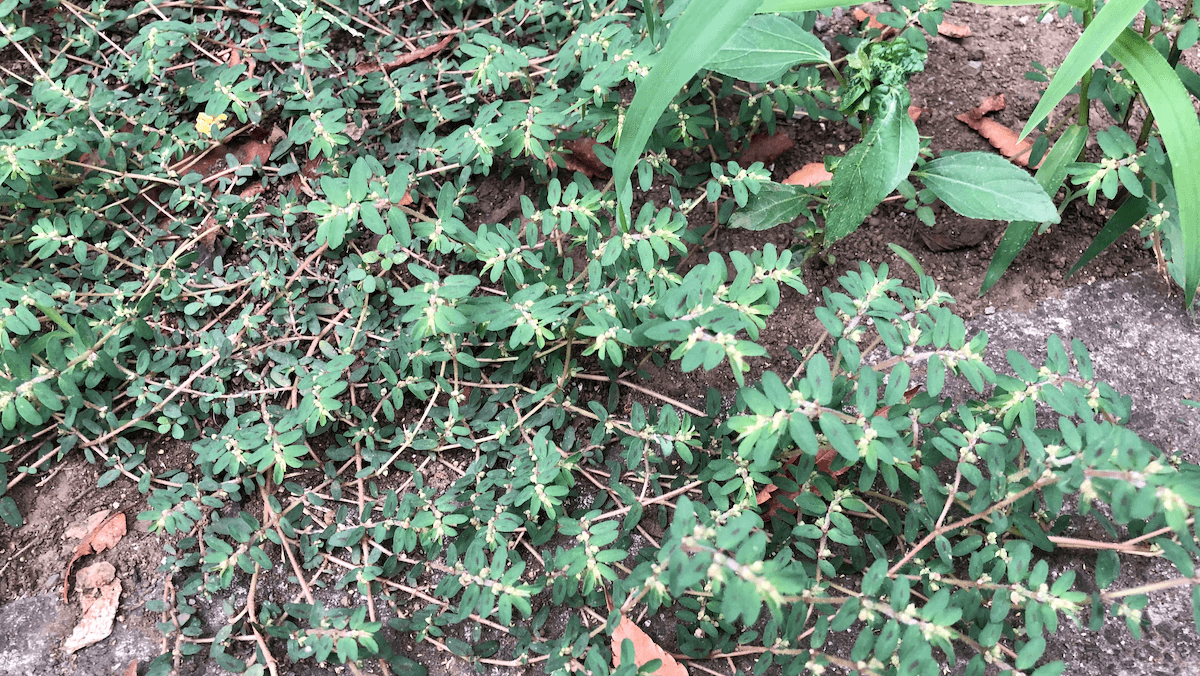今回ご紹介するのは「コニシキソウ」です。
コニシキソウ。とてもよい響きの名前ですね。
そのせいもあって在来の植物だとばかり思っていたのですが、実は外来種。そうと知ったときにはちょっと驚きました。
コニシキソウは北アメリカ原産で明治20年頃に日本に入ってきたそうです。代々木オフィス近辺でもアスファルトのすき間などに生えているのをよく見かけます。
茎は赤みを帯びていて葉っぱの真ん中あたりには赤い斑紋があり、なんだかオシャレな見た目をしています。
葉っぱは1cmもありませんが、ルーペで見てみると葉脈なのでしょうか、迷路のような模様が入っていて面白いです。
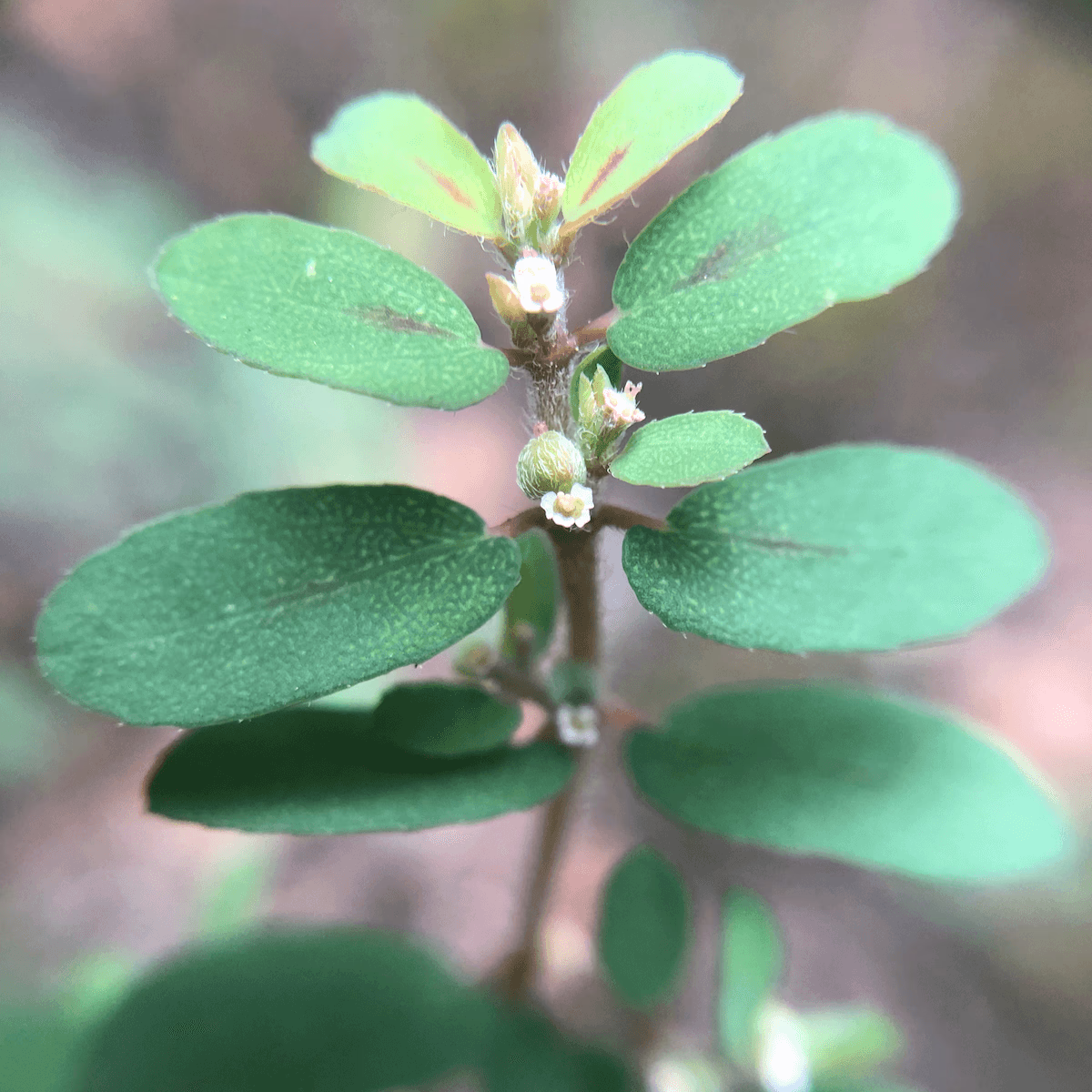
白い小さな花と、丸い実がついています。
ぺたっと地面を這っているものだと思っていましたが、少し観察してみると、立ち上がっていることも意外に多いようです。踏みつけられない場所だと上に向かって成長するのか、それとも実は違う種類なのかはちょっとわかりません。
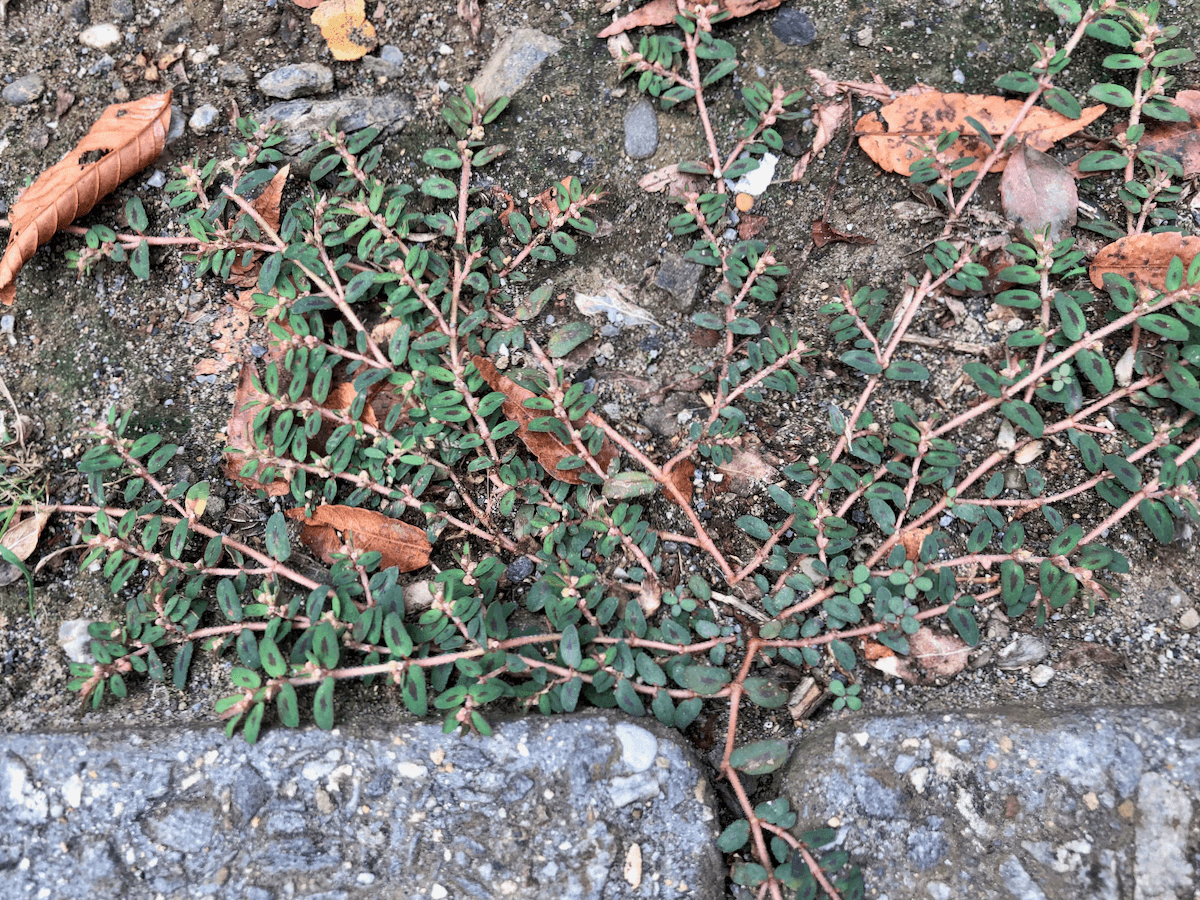
地面を這っているもの。赤みが強いです。
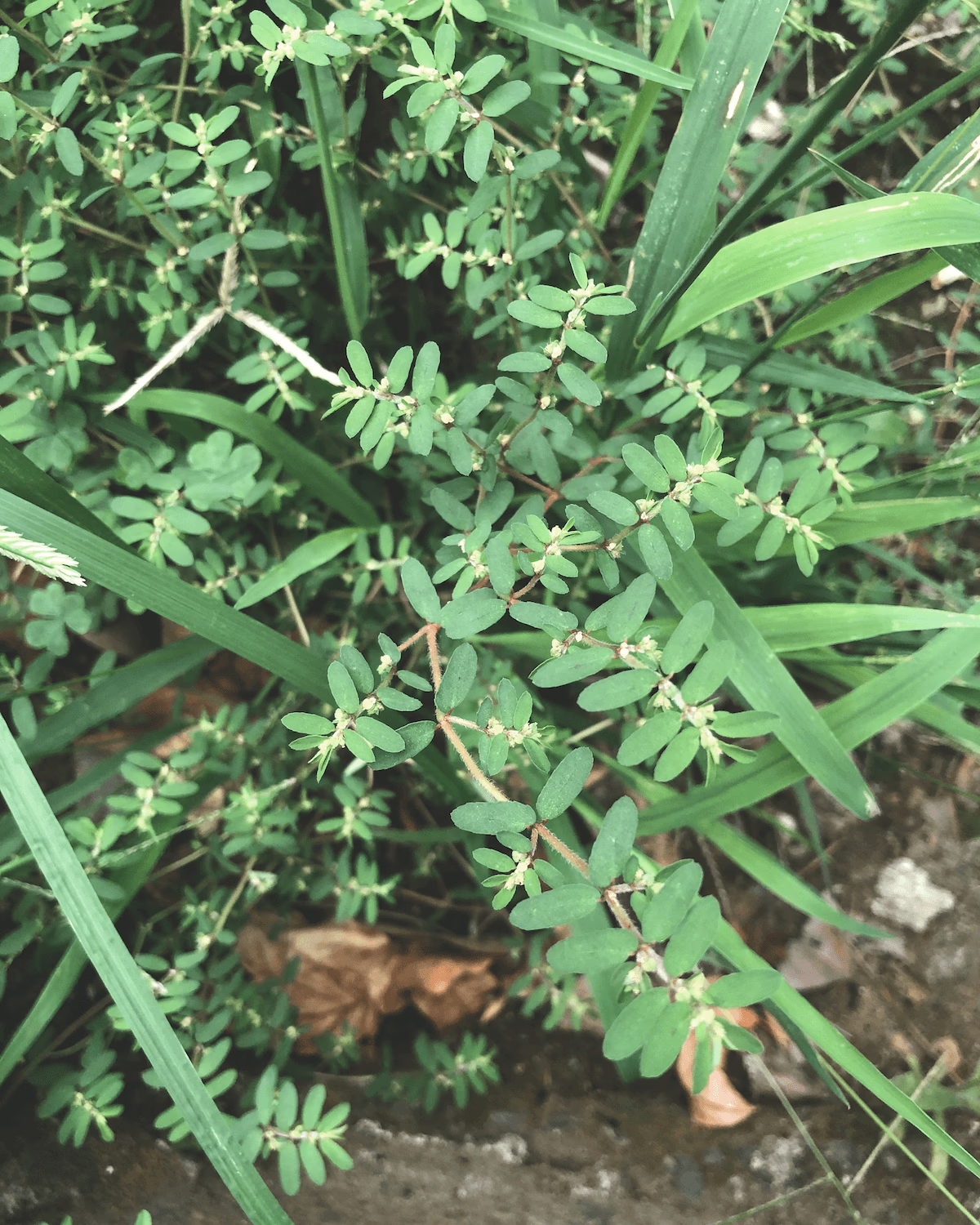
立ち上がっているもの。こちらは赤みが薄いです。
葉に赤い斑紋がある・茎や実に毛が生えている、という特徴からどちらもコニシキソウだろうと思うのですが、コニシキソウの仲間の他の植物も外来種として入ってきているそうで、そのあたりの見分けが私にはまだつきません。
なお、在来種は「ニシキソウ」といって、絶滅が危惧されている地域もあるそうです。おそらく私は見たことがないと思います。
生き物に興味を持って観察するようになると、知らぬ間に失われてしまうものがあることや、これまで見ていた風景が必ずしも昔ながらのものではないことに空恐ろしさを覚えてしまうこともあります。
環境問題というのは一人で考えるには大きすぎて何をしたらよいのかわからなくなってしまいますが、自分の足もとにあるものに意識を向けてみることも、わずかながら意味のあることだろうと(そうであったらいいなという願望も混じっていますが)思うのです。
話が大きくなってきましたが、つまりは生き物観察楽しいよ!ということですね。
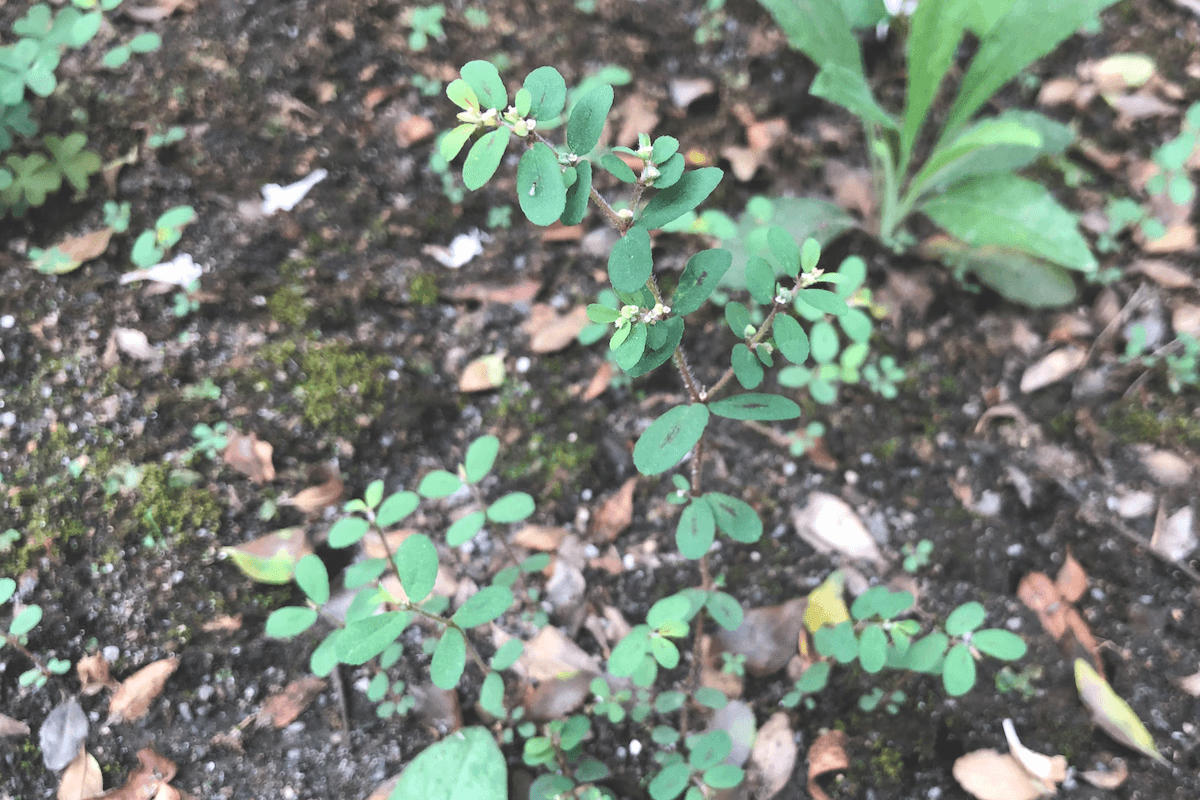
上の方の葉っぱに、ハエのようなとても小さな昆虫が止まっています。一つのものを観察していると、その周囲にあるものも目に入るようになってきます。
参考:
『帰化&外来植物 見分け方マニュアル950種』森 昭彦 著 2020 秀和システム
『植調 雑草大鑑』浅井 元朗 著 2015 全国農村教育協会
